- Home
- Jules Verne
Journey to the Center of the Earth (Barnes & Noble Classics Series) Page 22
Journey to the Center of the Earth (Barnes & Noble Classics Series) Read online
Page 22
I was speechless when faced with this apparition of another age. My uncle, usually a talkative and impetuous speaker, also kept silent. We had lifted the body. We had raised it up. It looked at us with its empty eye-sockets. We touched its resonant torso.
After a few moments of silence, the uncle was overcome by Professor Otto Lidenbrock again who, carried away by his temperament, forgot the circumstances of our journey, the place where we were, the enormous cave that surrounded us. No doubt he thought he was at the Johanneum, lecturing to his students, for he assumed a learned voice and addressed an imaginary audience:
“Gentlemen,” he said, “I have the honor of introducing a man of the Quaternary period to you. Eminent scholars have denied his existence, others no less eminent have affirmed it. The St. Thomases of paleontology, if they were here, would touch him with their fingers, and would be forced to acknowledge their error. I am quite aware that science has to be on its guard with discoveries of this kind. I know how Barnum and other charlatans of the same ilk have exploited fossil men.bw I know the story of Ajax’ kneecap, the alleged body of Orestes found by the Spartans, and of the ten-cubit tall body of Asterius mentioned by Pausanias. I’ve read the reports on the skeleton of Trapani, discovered in the fourteenth century, which was at the time identified as that of Polyphemus, and the history of the giant unearthed in the sixteenth century near Palermo. You know as well as I do, gentlemen, the analysis of large bones carried out at Lucerne in 1577, which the famous Dr. Felix Plater declared to be those of a nineteen-foot tall giant. I have devoured the treatises of Cassanion, and all those dissertations, pamphlets, speeches, and rejoinders published respecting the skeleton of Teutobochus, king of the Cimbrians and invader of Gaul, dug out of a sandpit in the Dauphiné in 1613! In the eighteenth century I would have fought with Pierre Campet against the pre-adamites of Scheuchzer.10 In my hands I have a text called Gigan—”
Here my uncle’s natural weakness re-emerged, that of being unable to pronounce difficult words in public.
“The text called Gigan—”
He could go no further.
“Giganteo—”
Impossible! The unfortunate word would not come out!
They would have had a good laugh at the Johanneum! “Gigantosteology” the professor finally managed to say, between two swearwords.
Then he continued with renewed energy and spirits:
“Yes, gentlemen, I know all these things! I also know that Cuvier and Blumenbach have identified these bones as simple bones of mammoths and other animals of the Quaternary period. But in this case doubt would be an insult to science! The corpse is here! You can see it, touch it. It’s not a skeleton, it’s an intact body, preserved for a purely anthropological purpose!”
I took care not to contradict this assertion.
“If I could wash it in a solution of sulphuric acid,” pursued my uncle, “I would be able to remove all the bits of soil and the splendid shells that are embedded in it. But I do not have this precious solvent at hand. Yet, such as it is, the body will tell us its own story.”
Here the professor took the fossil corpse and handled it with the skill of a showman.
“You see,” he resumed, “that it’s not even six feet tall, and we are far removed from the alleged giants. As for the race to which it belongs, it is obviously Caucasian. It’s the white race, our own! The skull of this fossil is a regular oval, with no prominent cheekbones, no projecting jaws. It shows no sign of the prognathism that diminishes the facial angle.bx Measure that angle, it’s nearly ninety degrees. But I’ll go even further in my deductions, and I dare say that this human specimen belongs to the Japhetic family, which extends from India to the boundaries of western Europe. Don’t smile, gentlemen.”
Nobody was smiling, but the professor was used to seeing faces spread in smiles during his learned lectures.
“Yes,” he pursued with new energy, “this is a fossil man, a contemporary of the mastodons whose bones fill this amphitheatre. But if you ask me how he came here, how the layers in which he was buried slid into this enormous cavern in the earth, I will not allow myself to answer. No doubt in the Quaternary period considerable upheavals still took place in the earth’s crust. The gradual cooling of the globe created cracks, fissures and faults, into which some of the upper soil probably fell. I want to make no assertions, but after all the man is here, surrounded by the work of his hands, by the hatchets and the flint arrow-heads that made the Stone Age possible, and unless he came here as a tourist and a pioneer of science like myself, I cannot doubt the authenticity of his ancient origin.”
The professor fell silent, and I broke into unanimous applause. In any case my uncle was right, and more learned men than his nephew would have had trouble arguing with him.
Another clue. This fossilized body was not the only one in the immense boneyard. We found other corpses at every step we took in this dust, and my uncle could choose the most wonderful of these specimens to convince the skeptics.
Indeed it was an amazing spectacle, these generations of men and animals commingled in this cemetery. But one serious question arose that we dared not answer. Had these beings slid down to the shore of the Lidenbrock Sea through an upheaval in the ground when they were already reduced to dust? Or did they rather dwell in this underground world, under this artificial sky, living and dying like the inhabitants of the earth? Until now, only sea monsters and fishes had appeared to us alive! Did some man of the abyss still wander on this desert strand?
XXXIX
FOR ANOTHER HALF HOUR our feet trod on these layers of bones. We pushed on, driven by a burning curiosity. What other marvels, what new treasures for science did this cavern hold? My eyes were prepared for any surprise, my imagination for any amazement.
The shore had long disappeared behind the hills of bones. The rash professor, unconcerned about losing his way, took me along. We advanced in silence, bathed in electric waves. Due to some phenomenon that I cannot explain, and due to its by then complete diffusion, the light illuminated all the sides of an object equally. Its source no longer resided at a particular point in space and cast no shadows. One could have believed that it was midday in the middle of the summer, in the equatorial regions under the vertical rays of the sun. All steam had disappeared.
The rocks, the distant mountains, a few indistinct clumps of distant forests came to look strange in this equal distribution of the light waves. We resembled Hoffmann’s fantastic character who has lost his shadow.11
After a mile’s walk the edge of an immense forest appeared, but no longer one of the mushroom forests near Port Graüben.
It was the vegetation of the Tertiary period in all its magnificence. Tall palm trees of species that have now disappeared, superb palmaceae, pines, yews, cypress, and thujas represented the conifer family, and were linked to each other through a network of inextricable lianas. A lush carpet of moss and hepaticas covered the soil. Some creeks murmured in the shade, which did not deserve the name since the trees cast no shadow. On their banks grew tree-ferns similar to those grown in hothouses on the inhabited earth. Only color was missing from all those trees, shrubs, and plants that were deprived of the life-giving heat of the sun. Everything blended together in a uniform brownish and faded-looking hue. The leaves showed no green, and even the flowers, which were so numerous in the Tertiary period in which they first originated, now had no color or scent and looked under the impact of the atmosphere as if they were made out of faded paper.
My uncle Lidenbrock ventured into this gigantic thicket. I followed him, not without a certain fear. Since nature had here provided plant food, why would there not also be fearsome mammals? In the large clearings left by fallen and decayed trees, I saw leguminous plants, acerineae, rubiceae and many other edible shrubs that are liked by ruminants of all periods. Then trees from vastly different regions on the surface of the globe appeared, blended and mixed in together: the oak grew next to the palm tree, the Australian eucalyptus leaned against the
Norwegian fir, the Northern birch-tree interlaced its branches with those of the New Zealand kauri. It was enough to drive the most ingenious classifiers of terrestrial botany mad.
Suddenly I stopped. With my hand I held my uncle back.
The diffuse light allowed us to perceive the most minute objects in the depth of the thicket. I thought I had seen ... No! really, with my own eyes, I did see vast shapes moving under the trees! Indeed, these were gigantic animals, a whole herd of mastodons, not fossil ones, but live ones, similar to those whose remains were found in the swamps of Ohio in 1801! I saw these large elephants whose trunks were writhing under the trees like a legion of snakes. I heard the noise of their long tusks whose ivory bore into the old tree trunks. The branches cracked, and the leaves, torn off in considerable quantities, were swept into the huge maws of these monsters.
So the dream in which I had seen all this prehistoric world of the Tertiary and Quaternary periods rise again finally became reality! And we were there, alone, in the bowels of the earth, at the mercy of its fierce inhabitants!
My uncle stared.
“Let’s go!” he said suddenly, gripping my arm. “Onward! Onward!”
“No!” I cried. “No! We have no weapons! What would we do in the midst of this herd of giant quadrupeds? Come, Uncle, come! No human can safely challenge the rage of these monsters.”
“No human being!” replied my uncle, lowering his voice. “You’re wrong, Axel. Look, look down there! It seems to me I see a living being! a being similar to ourselves! a man!”
I looked, shrugging my shoulders, and resolved to push skepticism to its furthest limits. But although I was reluctant, I had to yield to the evidence.
Indeed, less than a quarter of a mile away, leaning against the trunk of an enormous kauri, a human being, the Proteus of these underground regions, a new son of Neptune,by watched over this countless herd of mastodons!
Immanis pecoris custos, immanior ipse.bz
Yes! Immanior ipse! This was no longer the fossil being whose corpse we had raised up in the boneyard, this was a giant, able to control these monsters. He was more than twelve feet tall. His head, huge like a buffalo’s, disappeared in the underbrush of his unkempt hair. It seemed like a real mane similar to that of the elephant of the first ages. In his hand he wielded an enormous branch with ease, a crook worthy of this prehistoric shepherd.
We stood immobile, stunned. But we might be seen. We had to flee.
“Come, come!” I exclaimed, pulling my uncle away, who for the first time let it happen.
A quarter of an hour later we were out of sight of this formidable enemy.
And now that I think about it calmly, now that my spirit has found peace again, now that months have gone by since this strange and supernatural encounter, what to think, what to believe? No! It is impossible! Our senses were deceived, our eyes did not see what they saw! No human being exists in that subterranean world! No generation of men dwells in those lower caverns of the globe, unconcerned about the inhabitants of its surface, without contact with them! It is crazy, profoundly crazy!
I prefer to admit the existence of some animal whose structure resembles the human structure, some ape of the early geological ages, some protopithecus, some mesopithecus, like the one discovered by Mr. Lartet in the bone deposit of Sansan!ca But in its size, this one exceeded all the measurements known in modern paleontology.
A human being watched over this countless herd of mastodons!
No matter! An ape, yes, an ape, no matter how unlikely! But a man, a living man, and with him a whole generation buried in the bowels of the earth! Never!
In the meantime, we had left the clear and luminous forest, speechless with amazement, overwhelmed by a stupefaction that bordered on mindlessness. We ran in spite of ourselves. It was a real flight, similar to those terrible impulses that one is subject to in certain night-mares. Instinctively we ran back to the Lidenbrock Sea, and I do not know in what vagaries my mind would have lost itself if it had not been for a concern that brought me back to practical matters.cb
Although I was certain that we were walking on soil where we had never set foot before, I often noticed rock formations whose shape reminded me of those at Port Graüben. This confirmed, in any case, the indications of the compass and our involuntary return to the north of the Lidenbrock Sea. Sometimes one could have mistaken one for the other. Brooks and waterfalls were tumbling everywhere from hundreds of projections in the rocks. I thought I recognized the layer of surturbrand, our faithful Hansbach and the cave in which I had come back to life. Then a few paces farther on, the arrangement of the cliffs, the appearance of a stream, the surprising outline of a rock threw me back in doubt.
I told my uncle about my indecision. Like myself, he hesitated. He could not find his way in this uniform scenery.
“Obviously,” I said to him, “we have not landed at our point of departure again, but the storm has carried us a little lower, and if we follow the shore we’ll find Port Graüben.”
“In that case,” replied my uncle, “it’s useless to continue this exploration, and the best is to return to our raft. But Axel, aren’t you mistaken?”
“It’s difficult to say for sure, Uncle, because all these rocks look alike. Yet I think I recognize the promontory at whose foot Hans built our vessel. We must be close to the little port, if indeed it isn’t right here,” I added, examining an inlet that I thought I recognized.
“No, Axel, we would at least find our own traces, and I see nothing...”
“But I do,” I exclaimed, rushing toward an object that glittered in the sand.
“What is it?”
“This,” I answered.
And I showed my uncle a rust-covered dagger which I had just picked up.
“Well!” he said, “did you bring this weapon with you?”
“Me? Not at all! But you ...”
“No, not that I know,” said the professor. “I’ve never had this object in my possession.”
“Well, this is strange!”
“No, Axel, it’s very simple. Icelanders often have weapons of this kind, and Hans, to whom this belongs, must have lost it...”
I shook my head. Hans had never had this dagger in his possession.
“So is this the weapon of some prehistoric warrior?” I exclaimed, “of a living man, of a contemporary of that gigantic shepherd’s? But no! This is not a tool of the Stone Age! Not even of the Bronze Age! This blade is made of steel...”
My uncle stopped me abruptly on this path into another ramble, and told me in his cold voice:
“Calm down, Axel, and be reasonable. This dagger is a weapon of the sixteenth century, a real dagger, like the ones gentlemen carried in their belts to give the coup de grace. It’s of Spanish origin. It belongs neither to you, nor to me, nor to the hunter, nor even to the human beings who live perhaps in the bowels of the globe!”
“What are you saying ... ?”
“Look, it never got chipped like this by cutting men’s throats; its blade is coated with a layer of rust that’s neither a day, nor a year, nor a hundred years old!”
The professor was getting excited according to his habit, and was getting carried away by his imagination.
“Axel,” he resumed, “we’re on the way toward a great discovery! This blade has been lying on the sand for a hundred, two hundred, three hundred years, and it got chipped on the rocks of this underground ocean!”
“But it hasn’t come on its own,” I cried. “It hasn’t twisted itself out of shape! Someone has been here before us!”
“Yes! a man.”
“And who was that man?”
“A man who has engraved his name somewhere with this dagger. That man wanted once more to indicate the way to the center of the earth with his own hand. Let’s search! Let’s search!”
And with meticulous attention we walked along the high wall, peeping into the most minute fissures that might open out into a tunnel.
So we came to a place
where the shore got narrower. The sea almost came to lap the foot of the cliffs, leaving a passage of at most a fathom. Between two boldly projecting rocks one could see the mouth of a dark tunnel.
There, on a granite slab, appeared two mysterious graven and half-eroded letters, the initials of the daring and fantastic traveler:
“A. S.!” shouted my uncle. “Arne Saknussemm! Always Arne Saknussemm!”
XL
SINCE THE BEGINNING OF the journey, I had been amazed so many times that I would have believed myself inured to surprises and blase about any astonishment. Yet at the sight of these two letters engraved three hundred years ago, I fell into an amazement akin to stupidity. Not only was the learned alchemist’s signature readable on the rock, but I even held the stylus which had engraved it in my hands. Unless I wanted to demonstrate glaring bad faith, I could no longer doubt the existence of the traveler and the reality of his journey.
While these reflections whirled around in my head, Professor Lidenbrock indulged in a fit of eulogy for Arne Saknussemm.
“Wonderful genius!” he exclaimed, “you did not forget anything to open up the path through the terrestrial crust to other mortals, and your fellow humans can find the traces that your feet left three centuries ago at the bottom of this dark underground! You reserved the contemplation of these wonders for other eyes besides your own! Your name, engraved at every stage, leads the traveler who is bold enough to follow you straight to his destination, and at the very center of our planet, we will once again find it inscribed with your own hand. I too will inscribe my name on that last page of granite! But for ever henceforth let this promontory that you saw, next to the ocean you discovered, be known by the name of Cape Saknussemm!”

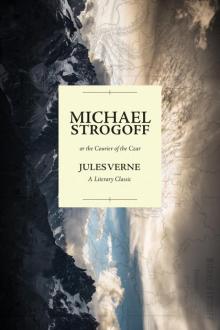 Michael Strogoff; Or the Courier of the Czar: A Literary Classic
Michael Strogoff; Or the Courier of the Czar: A Literary Classic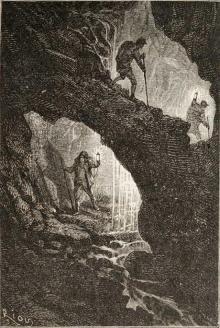 Voyage au centre de la terre. English
Voyage au centre de la terre. English Journey Through the Impossible
Journey Through the Impossible The Castaways of the Flag
The Castaways of the Flag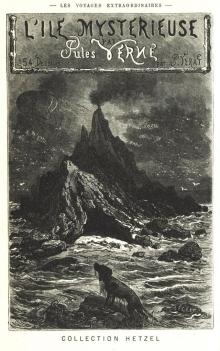 L'île mystérieuse. English
L'île mystérieuse. English Maître du monde. English
Maître du monde. English Around the World in Eighty Days
Around the World in Eighty Days A Voyage in a Balloon
A Voyage in a Balloon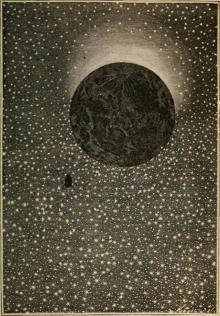 From the Earth to the Moon, Direct in Ninety-Seven Hours and Twenty Minutes: and a Trip Round It
From the Earth to the Moon, Direct in Ninety-Seven Hours and Twenty Minutes: and a Trip Round It Paris in the Twentieth Century
Paris in the Twentieth Century City in the Sahara - Barsac Mission 02
City in the Sahara - Barsac Mission 02 The English at the North Pole
The English at the North Pole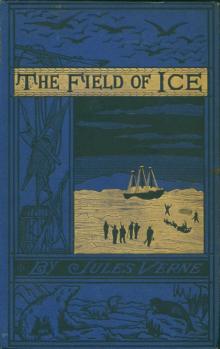 The Field of Ice
The Field of Ice From the Earth to the Moon
From the Earth to the Moon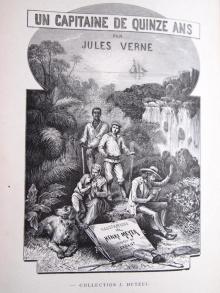 Un capitaine de quinze ans. English
Un capitaine de quinze ans. English The Mysterious Island
The Mysterious Island Les indes-noirs. English
Les indes-noirs. English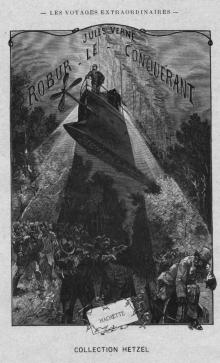 Robur-le-conquerant. English
Robur-le-conquerant. English Propeller Island
Propeller Island Around the World in Eighty Days. Junior Deluxe Edition
Around the World in Eighty Days. Junior Deluxe Edition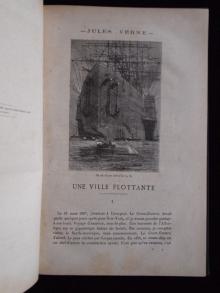 Les forceurs de blocus. English
Les forceurs de blocus. English In the Year 2889
In the Year 2889 Journey to the Centre of the Earth
Journey to the Centre of the Earth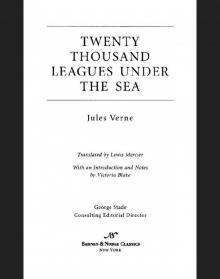 Twenty Thousand Leagues Under the Sea
Twenty Thousand Leagues Under the Sea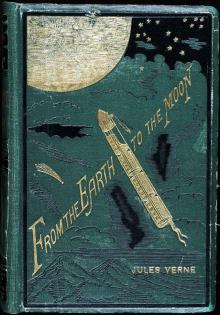 From the Earth to the Moon; and, Round the Moon
From the Earth to the Moon; and, Round the Moon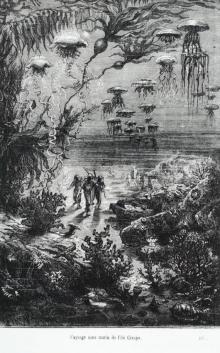 Vingt mille lieues sous les mers. English
Vingt mille lieues sous les mers. English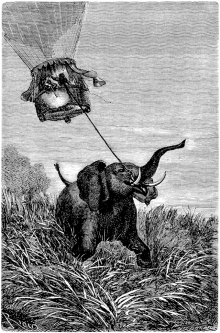 Cinq semaines en ballon. English
Cinq semaines en ballon. English Twenty Thousand Leagues under the Seas
Twenty Thousand Leagues under the Seas Face au drapeau. English
Face au drapeau. English Michael Strogoff; Or, The Courier of the Czar
Michael Strogoff; Or, The Courier of the Czar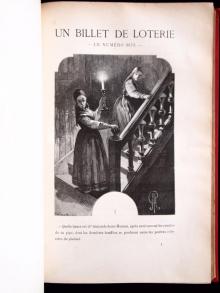 Un billet de loterie. English
Un billet de loterie. English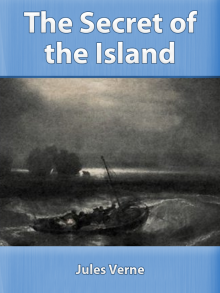 The Secret of the Island
The Secret of the Island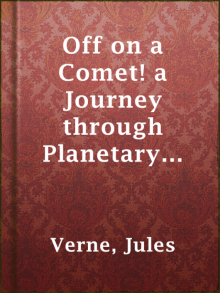 Off on a Comet! a Journey through Planetary Space
Off on a Comet! a Journey through Planetary Space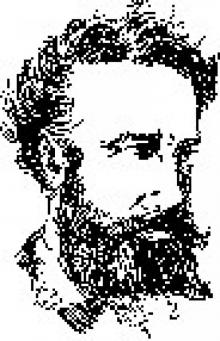 Into the Niger Bend: Barsac Mission, Part 1
Into the Niger Bend: Barsac Mission, Part 1 All Around the Moon
All Around the Moon A Journey to the Center of the Earth - Jules Verne: Annotated
A Journey to the Center of the Earth - Jules Verne: Annotated 20000 Lieues sous les mers Part 2
20000 Lieues sous les mers Part 2 Robur-le-Conquerant
Robur-le-Conquerant Les Index Noires
Les Index Noires Michael Strogoff; or the Courier of the Czar
Michael Strogoff; or the Courier of the Czar 20000 Lieues sous les mers Part 1
20000 Lieues sous les mers Part 1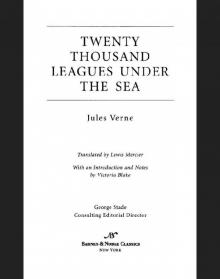 Twenty Thousand Leagues Under the Sea (Barnes & Noble Classics Series)
Twenty Thousand Leagues Under the Sea (Barnes & Noble Classics Series)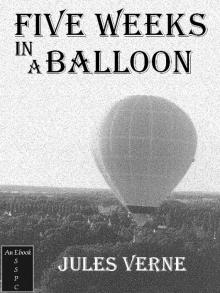 Five Weeks In A Balloon
Five Weeks In A Balloon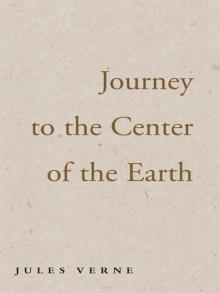 Journey to the Center of the Earth
Journey to the Center of the Earth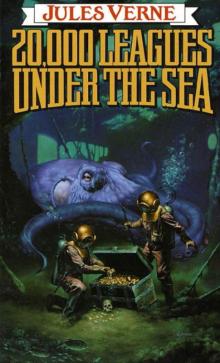 20,000 Leagues Under the Sea
20,000 Leagues Under the Sea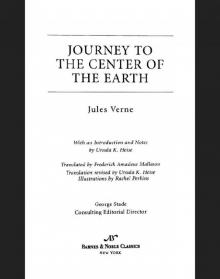 Journey to the Center of the Earth (Barnes & Noble Classics Series)
Journey to the Center of the Earth (Barnes & Noble Classics Series)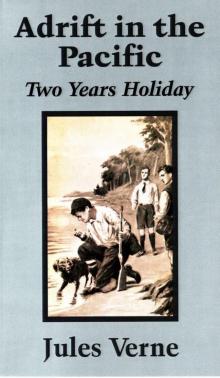 Adrift in the Pacific-Two Years Holiday
Adrift in the Pacific-Two Years Holiday The Collected Works of Jules Verne: 36 Novels and Short Stories (Unexpurgated Edition) (Halcyon Classics)
The Collected Works of Jules Verne: 36 Novels and Short Stories (Unexpurgated Edition) (Halcyon Classics)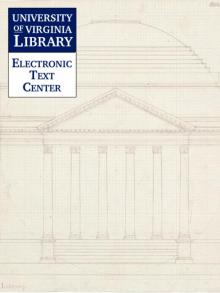 The Survivors of the Chancellor
The Survivors of the Chancellor Their Island Home
Their Island Home Le Chateau des Carpathes
Le Chateau des Carpathes Les Cinq Cents Millions de la Begum
Les Cinq Cents Millions de la Begum The Floating Island
The Floating Island Cinq Semaines En Ballon
Cinq Semaines En Ballon Autour de la Lune
Autour de la Lune